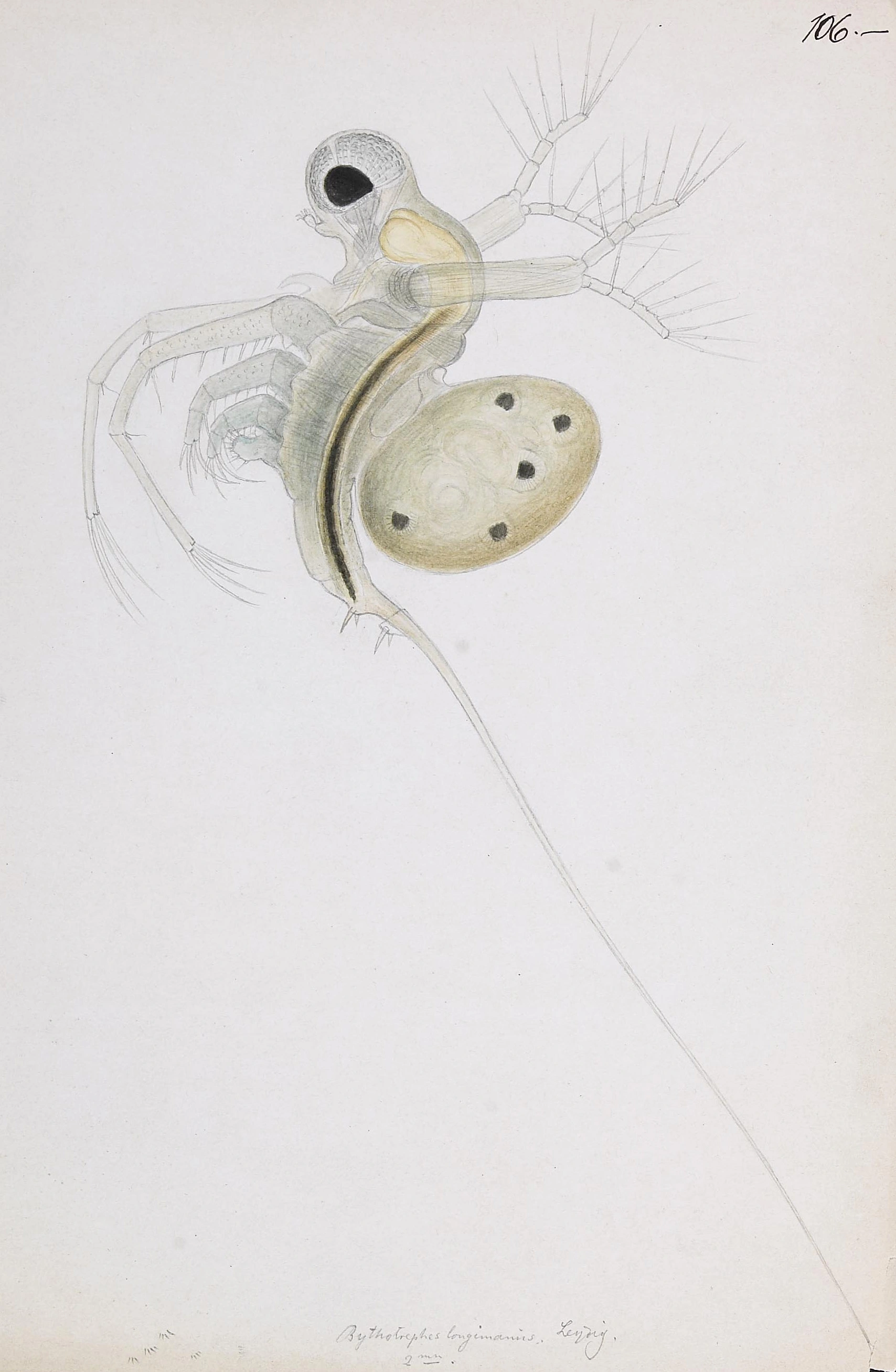Bythotrephes longimanus
Bythotrephes longimanus is a true predatory species. It has a fearful look with an eye which takes up most of the head, and an abdomen which is formed as a spectacular, extremely long process. It is widely distributed in Norway and the majority of records are from lakes.
Key characteristics
Bythotrephes longimanus (female)
Like Polyphemus pediculus, this predatory species is very different from other cladocerans. Its body is compact and as in P. pediculus, its eye takes up most of the head and a brood chamber with eggs/embryos appears on the dorsal side. However Bythotrephes longimanus is separated from the former species by the development of an abdomen which is formed as a spectacular, extremely long process (more than 10 mm). G.O. Sars was the first zoologist that concluded that this was a real abdominal process and not only abdominal bristles. Though B. longimanus is almost hyaline, it may have a tinge of grey or blue.
Female: Length 1.2–5.0 mm (without abdominal process)
Male: Length 1.2–4.0 mm
Ecology and distribution
Bythotrephes longimanus is a true limnetic predatory species, which occasionally may occur in the littoral. There are records from approximately 20 % of the lakes where zooplankton has been sampled. The majority of records are from lakes, and when surface area >10 ha it is found with a frequency of about 30 %. There are only a few records from the alpine zone. The highest frequency of B. longimanus is found in medium electrolyte rich lakes (1.5–7.0 mS/m) and when pH is between 5.0 and 7.0.
| Vitenskapelig navn | < 4,5 | 4,5 - 4,9 | 5,0 - 5,4 | 5,5 - 5,9 | 6,0 - 6,4 | 6,5 - 7,0 | 7,0 - 7,4 | > 7,5 |
|---|---|---|---|---|---|---|---|---|
| 5,7 | 7,7 | 17,3 | 20,3 | 26,2 | 22,4 | 21,6 | 12,4 |
| Vitenskapelig navn | < 1,0 | 1,0 - 1,4 | 1,5 - 1,9 | 2,0 - 2,9 | 3,0 - 3,9 | 4,0 - 4,9 | 5,0 - 6,9 | 7,0 - 9,9 | > 10,0 |
|---|---|---|---|---|---|---|---|---|---|
| 10,8 | 15,2 | 22,1 | 26,8 | 16,7 | 27,1 | 24,6 | 21,5 | 13,6 |
| Vitenskapelig navn | < 0,01 | 0,01 - 0,09 | 0,1 - 0,9 | 1,0 - 9,9 | 10,0 - 99 | 100 - 999 | > 1000 |
|---|---|---|---|---|---|---|---|
| 0 | 1 | 1,5 | 11,9 | 19,9 | 32,6 | 39,8 |
| Vitenskapelig navn | < 100 | 100-299 | 300-499 | 500-699 | 700-999 | >1000 |
|---|---|---|---|---|---|---|
| 23,3 | 20,3 | 27,9 | 17,7 | 18,6 | 6,2 |
